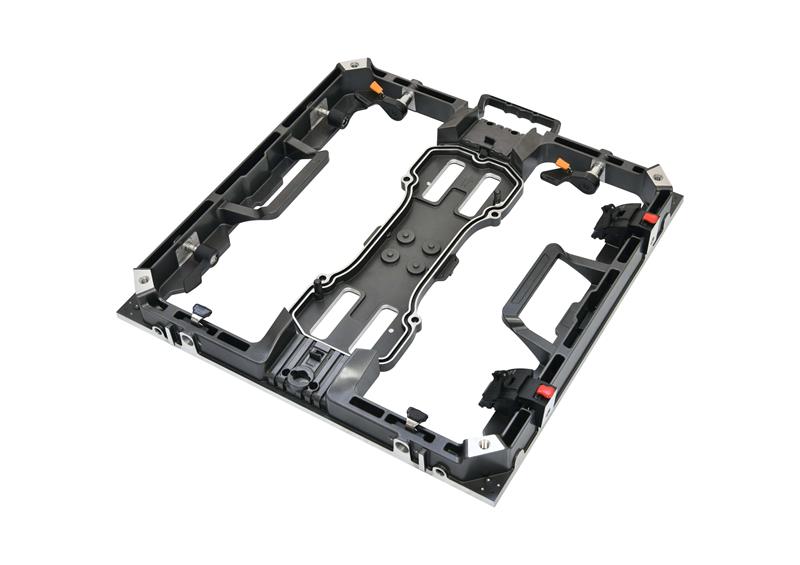2025-05-24 10:08:59
Custom Milled Aluminum refers to aluminum components that are precision-machined using CNC (Computer Numerical Control) milling machines to meet specific design requirements. This process allows for the creation of complex geometries with tight tolerances, typically within ±0.005 inches (0.127 mm) or better, depending on the application.

Aluminum alloys commonly used for custom milling include:
6061-T6: Yield strength of 35 ksi (241 MPa), excellent machinability
7075-T6: Yield strength of 73 ksi (503 MPa), high strength-to-weight ratio
2024-T3: Yield strength of 47 ksi (324 MPa), good fatigue resistance
CNC Milling achieves:
Standard tolerances of ±0.005 inches (0.127 mm)
High-precision tolerances down to ±0.0005 inches (0.0127 mm)
Surface finishes ranging from 32 µin (0.8 µm) Ra to 125 µin (3.2 µm) Ra
Thermal conductivity: 120-180 W/m·K
Electrical conductivity: 35-50% IACS (International Annealed Copper Standard)
Thermal expansion coefficient: 23.1 × 10⁻⁶/°C (for 6061 alloy)
Custom milled aluminum components account for approximately 80% of non-ferrous aircraft materials. Applications include:
Structural airframe components with weight savings of 15-20% compared to steel
Precision hydraulic system parts with operating pressures up to 3,000 psi (20.7 MPa)
Avionics enclosures with EMI shielding effectiveness of 60-80 dB
Modern vehicles contain 300-400 lbs (136-181 kg) of aluminum components:
Engine blocks with wall thicknesses as low as 3 mm
Transmission housings capable of withstanding temperatures up to 150°C (302°F)
Lightweight chassis components reducing vehicle weight by 10-12%
Heat sinks with thermal resistance values below 0.5°C/W
RF waveguide components maintaining signal integrity up to 40 GHz
Server racks with load capacities exceeding 1,000 lbs (454 kg)
Medical-grade aluminum (ISO 10993 compliant) is used for:
Surgical instrument components with surface finishes below 16 µin (0.4 µm) Ra
Imaging equipment mounts with vibration damping properties
Portable medical devices with weight reductions of 30-40% compared to stainless steel
Recommended cleaning protocol:
Use pH-neutral cleaners (pH 6-8) to prevent corrosion
For degreasing, use solvents with flash points above 60°C (140°F)
Ultrasonic cleaning at frequencies of 25-40 kHz for intricate parts
Rinse with deionized water (resistivity > 1 MΩ·cm)
Aluminum's natural oxide layer (2-10 nm thick) can be enhanced through:
Anodizing (Type II: 0.0005-0.002 inches thickness, Type III: 0.002-0.003 inches)
Chromate conversion coatings (0.1-0.5 µm thickness)
Powder coating with thicknesses of 2-4 mils (50-100 µm)
For moving parts:
Use synthetic lubricants with viscosity indexes above 150
Boundary lubrication for loads exceeding 30,000 psi (207 MPa) contact pressure
Dry film lubricants (e.g., PTFE) for high-temperature applications up to 260°C (500°F)
| Component Type | Visual Inspection | Dimensional Check | Load Testing |
|---|---|---|---|
| Structural | Quarterly | Annually (±0.002") | Every 2 years |
| Precision | Monthly | Semi-annually (±0.0005") | Annually |
| Rotating | Weekly | Quarterly (±0.001") | Semi-annually |
Modern CNC mills achieve:
Spindle speeds up to 30,000 RPM
Feed rates exceeding 500 ipm (12.7 m/min)
Material removal rates of 15-20 in³/min (246-328 cm³/min) for aluminum
5-axis CNC capabilities enable:
Simultaneous machining from ±110° in two rotational axes
Reduction in setups from 5-6 to 1-2 for complex parts
Improved surface finishes by 30-40% through optimized tool paths